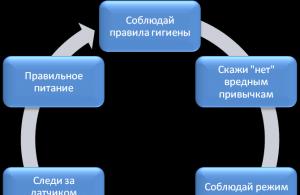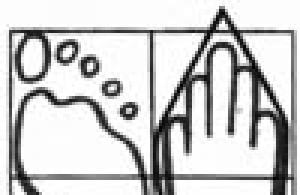In Russia, the model is sold in three body configurations: a three- and five-door hatchback (Kia pro cee'd and Kia Cee'd), as well as a station wagon (Kia Cee'd sw). A wide range of motors allows you to get modifications with very different technical characteristics. The starting engine is a 1368cc Kappa 1.4-litre unit. see, issuing up to 100 hp power and up to 134 Nm of torque. The remaining engines represent the Gamma family almost in its entirety. This:
- 1.6 MPI recoil 129 hp (157 Nm) with distributed fuel injection;
- 1.6 GDI with 135 hp (164 nm) with direct injection and a phase change system on both timing shafts. Engine pistons have special recesses for better fuel injection and combustion of the mixture. The compression ratio is 11.0:1 (regular MPI has a ratio of 10.5:1).
- The 1.6 T-GDI is a turbocharged unit based on the naturally aspirated 1.6 GDI engine with the addition of twin-scroll supercharging. Installation power - 204 hp, peak torque - 265 Nm (available already from 1500 rpm). Equipped with such an engine, the car received the prefix GT. It relies only on Kia Ceed hatchbacks.
Gearboxes available for the car: 6-speed manual transmission (for 1.4 MPI, 1.6 MPI and 1.6 T-GDI engines), 6-band automatic transmission (1.6 MPI) and 6DCT preselective “robot” (combined with 1.6 GDI 135 hp)
In Europe, the list of Kia Sid engines is longer. It includes, for example, a 1.0-liter three-cylinder turbo engine in two boost options (110 and 120 hp), as well as a 1.6 CRDi diesel engine with various settings. The latest seven-speed "robot" DCT is paired with a 136 hp diesel unit.
Returning to the Russian specification, we note the dynamic characteristics of the Kia Ceed GT with a 204-horsepower turbocharged four. Such a car accelerates to 100 km / h in just 7.6 seconds, which is facilitated by a wide torque shelf (1500-4500 rpm), ground clearance reduced to 140 mm (normal versions have a clearance of 150 mm), and a clamped suspension.
In terms of fuel consumption, the “junior” 1.4 MPI engine looks most preferable, consuming about 6.2 liters per “hundred” in the combined cycle. Versions with 1.6-liter units burn only a little more - from 6.4 liters.
The Kia Ceed sw station wagon has the most impressive luggage compartment. Behind the backs of the rear seats it will fit up to 528 liters of cargo, behind the backs of the front seats with the rear seats folded down - up to 1642 liters.
Specifications Kia Sid hatchback 5-door
| Parameter | Kia Sid 1.4 100 HP | Kia Sid 1.6 MPI 129 hp | Kia Sid 1.6 GDI 135 hp | Kia Sid 1.6 T-GDI 204 hp | |
|---|---|---|---|---|---|
| Engine | |||||
| Engine code (series) | Kappa | G4FG (Gamma) | G4FD (Gamma) | G4FJ (Gamma) | |
| engine's type | petrol | ||||
| Injection type | distributed | direct | |||
| Supercharging | No | Yes | |||
| Number of cylinders | 4 | ||||
| Cylinder arrangement | row | ||||
| 4 | |||||
| Volume, cu. cm. | 1368 | 1591 | |||
| Piston diameter/stroke, mm | 72.0 x 84.0 | 77 x 85.4 | |||
| Power, hp (at rpm) | 100 (6000) | 129 (6300) | 135 (6300) | 204 (6000) | |
| 134.4 (4000) | 157 (4850) | 164.3 (4850) | 265 (1500-4500) | ||
| Transmission | |||||
| Drive unit | front | ||||
| Transmission | 6MKPP | 6MKPP | 6automatic transmission | 6DCT | 6MKPP |
| Suspension | |||||
| Front suspension type | independent, McPherson | ||||
| Rear suspension type | independent, multi-link | ||||
| Brake system | |||||
| Front brakes | disc ventilated | ||||
| Rear brakes | disk | disc ventilated | |||
| Steering | |||||
| Amplifier type | electric | ||||
| Tires and wheels | |||||
| Tire size | |||||
| Disc size | |||||
| Fuel | |||||
| Fuel type | AI-95 | ||||
| Environmental class | — | ||||
| Tank volume, l | 53 | ||||
| Fuel consumption | |||||
| City cycle, l/100 km | 8.1 | 8.6 | 9.5 | 8.5 | 9.7 |
| Country cycle, l/100 km | 5.1 | 5.1 | 5.2 | 5.3 | 6.1 |
| Combined cycle, l/100 km | 6.2 | 6.4 | 6.8 | 6.4 | 7.4 |
| dimensions | |||||
| Number of seats | 5 | ||||
| Number of doors | 5 | ||||
| Length, mm | 4310 | ||||
| Width, mm | 1780 | ||||
| Height, mm | 1470 | ||||
| Wheel base, mm | 2650 | ||||
| Front wheel track, mm | 1555 | ||||
| Rear wheel track, mm | 1563 | ||||
| Front overhang, mm | 900 | ||||
| Rear overhang, mm | 760 | ||||
| 380/1318 | |||||
| 150 | 140 | ||||
| Weight | |||||
| Equipped (min/max), kg | 1179/1313 | 1189/1323 | 1223/1349 | 1227/1353 | 1284/1395 |
| Full, kg | — | ||||
| Dynamic characteristics | |||||
| Maximum speed, km/h | 183 | 195 | 192 | 195 | 230 |
| Acceleration time to 100 km/h, s | 12.7 | 10.5 | 11.5 | 10.8 | 7.6 |
Specifications Kia pro Ceed
| Parameter | Kia Sid 1.6 MPI 129 hp | Kia Sid 1.6 GDI 135 hp | Kia Sid 1.6 T-GDI 204 hp | |
|---|---|---|---|---|
| Engine | ||||
| Engine code (series) | G4FG (Gamma) | G4FD (Gamma) | G4FJ (Gamma) | |
| engine's type | petrol | |||
| Injection type | distributed | direct | ||
| Supercharging | No | Yes | ||
| Number of cylinders | 4 | |||
| Cylinder arrangement | row | |||
| Number of valves per cylinder | 4 | |||
| Volume, cu. cm. | 1591 | |||
| Piston diameter/stroke, mm | 77 x 85.4 | |||
| Power, hp (at rpm) | 129 (6300) | 135 (6300) | 204 (6000) | |
| Torque, N*m (at rpm) | 157 (4850) | 164.3 (4850) | 265 (1500-4500) | |
| Transmission | ||||
| Drive unit | front | |||
| Transmission | 6MKPP | 6automatic transmission | 6DCT | 6MKPP |
| Suspension | ||||
| Front suspension type | independent, McPherson | |||
| Rear suspension type | independent, multi-link | |||
| Brake system | ||||
| Front brakes | disc ventilated | |||
| Rear brakes | disk | disc ventilated | ||
| Steering | ||||
| Amplifier type | electric | |||
| Tires and wheels | ||||
| Tire size | 195/65 R15 / 205/55 R16 / 225/45 R17 / 225/40 R18 | |||
| Disc size | 6.0Jx15 / 6.5Jx16 / 7.0Jx17 / 7.5Jx18 | |||
| Fuel | ||||
| Fuel type | AI-95 | |||
| Environmental class | — | |||
| Tank volume, l | 53 | |||
| Fuel consumption | ||||
| City cycle, l/100 km | 8.6 | 9.5 | 8.5 | 9.7 |
| Country cycle, l/100 km | 5.1 | 5.2 | 5.3 | 6.1 |
| Combined cycle, l/100 km | 6.4 | 6.8 | 6.4 | 7.4 |
| dimensions | ||||
| Number of seats | 5 | |||
| Number of doors | 3 | |||
| Length, mm | 4310 | |||
| Width, mm | 1780 | |||
| Height, mm | 1430 | |||
| Wheel base, mm | 2650 | |||
| Front wheel track, mm | 1555 | |||
| Rear wheel track, mm | 1563 | |||
| Front overhang, mm | 900 | |||
| Rear overhang, mm | 760 | |||
| Trunk volume (min/max), l | 380/1225 | |||
| Ground clearance (clearance), mm | 150 | 140 | ||
| Weight | ||||
| Equipped (min/max), kg | 1181/1307 | 1215/1336 | 1220/1341 | 1284/1395 |
| Full, kg | — | |||
| Dynamic characteristics | ||||
| Maximum speed, km/h | 195 | 192 | 195 | 230 |
| Acceleration time to 100 km/h, s | 10.5 | 11.5 | 10.8 | 7.6 |
Specifications Kia Sid station wagon
| Parameter | Kia Sid 1.4 100 HP | Kia Sid 1.6 MPI 129 hp | Kia Sid 1.6 GDI 135 hp | |
|---|---|---|---|---|
| Engine | ||||
| Engine code (series) | Kappa | G4FG (Gamma) | G4FD (Gamma) | |
| engine's type | petrol | |||
| Injection type | distributed | direct | ||
| Supercharging | No | |||
| Number of cylinders | 4 | |||
| Cylinder arrangement | row | |||
| Number of valves per cylinder | 4 | |||
| Volume, cu. cm. | 1368 | 1591 | ||
| Piston diameter/stroke, mm | 72.0 x 84.0 | 77 x 85.4 | ||
| Power, hp (at rpm) | 100 (6000) | 129 (6300) | 135 (6300) | |
| Torque, N*m (at rpm) | 134.4 (4000) | 157 (4850) | 164.3 (4850) | |
| Transmission | ||||
| Drive unit | front | |||
| Transmission | 6MKPP | 6MKPP | 6automatic transmission | 6DCT |
| Suspension | ||||
| Front suspension type | independent, McPherson | |||
| Rear suspension type | independent, multi-link | |||
| Brake system | ||||
| Front brakes | disc ventilated | |||
| Rear brakes | disk | |||
| Steering | ||||
| Amplifier type | electric | |||
| Tires and wheels | ||||
| Tire size | 195/65 R15 / 205/55 R16 / 225/45 R17 | |||
| Disc size | 6.0Jx15 / 6.5Jx16 / 7.0Jx17 | |||
| Fuel | ||||
| Fuel type | AI-95 | |||
| Environmental class | — | |||
| Tank volume, l | 53 | |||
| Fuel consumption | ||||
| City cycle, l/100 km | 8.1 | 8.8 | 9.5 | 8.5 |
| Country cycle, l/100 km | 5.1 | 5.7 | 5.2 | 5.3 |
| Combined cycle, l/100 km | 6.2 | 6.7 | 6.8 | 6.4 |
| dimensions | ||||
| Number of seats | 5 | |||
| Number of doors | 5 | |||
| Length, mm | 4505 | |||
| Width, mm | 1780 | |||
| Height, mm | 1485 | |||
| Wheel base, mm | 2650 | |||
| Front wheel track, mm | 1555 | |||
| Rear wheel track, mm | 1563 | |||
| Front overhang, mm | 900 | |||
| Rear overhang, mm | 955 | |||
| Trunk volume (min/max), l | 528/1642 | |||
| Ground clearance (clearance), mm | 150 | |||
| Weight | ||||
| Equipped (min/max), kg | 1204/1349 | 1214/1357 | 1248/1385 | 1255/1392 |
| Full, kg | — | |||
| Dynamic characteristics | ||||
| Maximum speed, km/h | 181 | 192 | 190 | 192 |
| Acceleration time to 100 km/h, s | 13.0 | 10.8 | 11.8 | 11.1 |
| Engine | ||||
| engine's type | 1.4DOHC CVVT | 1.6DOHC CVVT | 1.4 DOHC CVVT (T-GDI) | |
| Fuel type | petrol | |||
| Working volume, cm3 | 1368 | 1591 | 1353 | |
| Bore x Stroke (mm) | 72.0 x 84.0 | 77x85.44 | 71.6 x 84.0 | |
| Compression ratio | 10.5 | 10 | ||
| Maximum power, hp (rpm) | 99,6 (6000) | 127.5 (6300) | 140 (6000) | |
| Maximum power (kW @ rpm) | 73.3/6000 | 93.8 (6300) | 103 (6000) | |
| Maximum torque moment, N.m (rpm) | 134 (4000) | 154.6 (4850) | 242 (1500~3200) | |
| Maximum torque kg.m (rpm) | 13.7 (3500) | 15.8 (4850) | 24.7 (1500~3200) | |
| Cylinder block | Aluminum | |||
| cylinder head | Aluminum | |||
| Pallet | Steel | |||
| Valve system | 16 VALVE MLA | 16 VALVE HLA | ||
| Gas distribution mechanism | DOHC 16 valves | |||
| Fuel system | Multiport injection, MPI | Direct injection system, GDI | ||
| Fuel Requirements | unleaded gasoline with an octane rating of at least 92 | unleaded gasoline with an octane rating of at least 95 | ||
| Cooling system | liquid cooling | |||
| Transmission | ||||
| Transmission type | MT | AT | DCT | |
| Number of gears | 6 | 7 | ||
| type of drive | front | |||
| main gear | 4,400 | 4,467 | 3,796 | FGR 1: 4.294 FGR 2: 3.174 |
| Reverse gear | 3,700 | 3,583 | 3,440 | 5,304 |
| 1st | 3,769 | 3,308 | 4,400 | 3,929 |
| 2nd | 2,045 | 1,962 | 2,726 | 2,318 |
| 3rd | 1,370 | 1,323 | 1,834 | 2,043 |
| 4th | 1,036 | 1,024 | 1,392 | 1,070 |
| 5th | 0,893 | 0,825 | 1,000 | 0,822 |
| 6th | 0,774 | 0,704 | 0,774 | 0,884 |
| 7th | - | 0,721 | ||
| clutch type | dry, single disc, hydraulically driven | torque converter | dry double disc with diaphragm spring | |
| Disc size (Diameter x Thickness (mm)) | Φ200×8.1 | Φ235×8.65T | N/A | C1: 235ⅹ140 C2: 228.6ⅹ140 |
| Transmission oil volume (l.) | 1.6~1.7 | 1.5~1.6 | 6.7 | 1.9-2.0 |
| Steering | ||||
| Type | Electric booster | |||
| Steering ratio | 12,7 | |||
| The number of turns of the steering wheel between the extreme positions | 2,44 | |||
| Minimum turning radius (m) | 5,3 | |||
| Suspension | ||||
| Suspension (front/rear) | independent, spring, MacPherson type, with anti-roll bar / independent, multi-link, spring, with telescopic hydraulic shock absorbers, with anti-roll bar | |||
| shock absorbers | Gas | |||
| Weight | ||||
| Curb weight (min/max), kg | 1 222 / 1 325 | 1 241 / 1 372 | 1 269 / 1 407 | 1 297 / 1 429 |
| Full mass | 1 800 | 1 820 | 1 850 | 1 880 |
| Trailer weight (kg) (not equipped with brakes) | 600 | 450 (600) | ||
| Trailer weight (kg) (equipped with brakes) | 1 200 | 1 300 | 1 200 | 1 000 (1 410) | 75 | 80 |
| Brake system | ||||
| Front brake discs | STD: Vent. disc / 280 x 23 OPT: Vent. disc / 305 x 25 | |||
| Rear brake discs | STD: Vent. disc/ 272 x 10 OPT: Vent. disk/ 284 x 10 | |||
| Vacuum brake booster, diameter, thickness (mm) | LHD: 285.5, RHD: 262, 90mm | |||
| Vacuum brake booster, pressure booster ratio | 8:1 | |||
| Brake Master Cylinder Diameter (mm) | 23,81 | |||
| Parking brake type | Handbrake, OPT: electronic parking brake | |||
| Body | ||||
| Dimensions (length/width/height), mm | 4 600 / 1 800 / 1 475 | |||
| Wheel base, mm | 2 650 | 2650 | ||
| Track (front, rear), mm | 15"": 1573 / 1581; 16"": 1565 / 1573; 17"": 1559 / 1567 | |||
| Overhang (front/rear) | 880 / 1 070 | |||
| Ground clearance, mm | 150 | |||
| Angle of entry / exit (bumpers of standard modification), gr. | 15.4 / 18.7 | |||
| body type | station wagon | |||
| Number of doors/seats | 5/5 | |||
| Dynamics* | ||||
| Maximum speed, km/h | 183 | 195 | 192 | 205 |
| Acceleration 0-100 km/h, s | 12,9 | 10,8 | 11,8 | 9,4 |
| Acceleration 80-120 km/h, s | 15,9 | 14,9 | 8,6 | 6,6 |
| Way when braking from 100 to 0 km/h, m | 35.8 (AB mode) | |||
| Path when braking from 50 to 0 km/h, m | 10,9 | |||
| Fuel economy** | ||||
| City, l/100km | 8,2 | 8,7 | 9,8 | 7,7 |
| Track, l/100km | 5,5 | 5,6 | 5,8 | 5,2 |
| Mixed, l/100km | 6,5 | 6,8 | 7,3 | 6,1 |
| CO2 emissions | ||||
| City, g/km | 191 | 202 | 225 | 179 |
| Track, g/km | 127 | 130 | 135 | 120 |
| Combined, g/km | 151 | 156 | 168 | 142 |
| Internal dimensions (mm) | ||||
| Length x Width x Height of interior | 1 832 / 1 511 / 1 197 | 1 832 / 1 511 / 1197 | 1 832 / 1 511 / 1 197 | |
| Legroom (1st/2nd/3rd row) | 1 073 / 883 | 1073 / 883 | 1 073 / 883 | |
| Distance from the seat cushion to the ceiling (1st / 2nd / 3rd row) | 994 / 990 | |||
| Cabin width at shoulder level (1st/2nd row) | 1 428 / 1 406 | 1 428 / 1406 | 1 428 / 1 406 | |
| Cabin width at hip level (1st/2nd row) | 1 370 / 1 352 | 1 370 / 1352 | 1 370 / 1 352 | 1370 / 1352 |
| electrical equipment | ||||
| Battery capacity (Ah) | 60 Ah | |||
| Generator (B, A) | 13.5V 90A | |||
| Starter (V, kW) | 12V 0.9kW | |||
| Capacity | ||||
| Minimum trunk volume (l) | 625 | |||
| Luggage compartment volume (l) with rear seats folded (l) | 1 694 | |||
| Wheels / Tires | ||||
| steel disc | 6.0Jx15, 6.5Jx16 | |||
| Alloy wheel (size / offset) | 6.5Jx16, 7.0Jx17 | |||
| Tire size | 195/65R15, 205/55R16, 225/45R17 | |||
| Spare wheel | with (T125/80D15, T125/80D16), Steel disc (4TX15, 4TX16) | |||
* Acceleration time data obtained under reference conditions using special measuring equipment using reference fuel. The actual acceleration time may differ due to the influence of various objective and subjective factors: humidity, pressure and temperature of the ambient air, fractional composition of the fuel used, terrain, road surface characteristics, wind direction and speed, precipitation, tire pressure and their dimensions, make and model, weight of cargo carried (including driver and passengers) and driving skills. Due to differences in vehicle configurations and requirements in different markets, model specifications may differ from those indicated above. Kia reserves the right to make design and equipment changes without prior notice.
** Fuel consumption data obtained under standardized conditions using special measuring equipment. Actual fuel consumption may differ due to the influence of various objective and subjective factors: humidity, ambient air pressure and temperature, fractional composition of the fuel used, terrain, road surface characteristics, vehicle speed, wind direction and speed, precipitation, tire pressure a also their dimensions, make and model, weight of the transported cargo (including the driver and passengers) and driving habits (frequency and intensity of longitudinal and lateral accelerations, average speed).
*
Getting the maximum benefit in the amount of 40,000 rubles is possible when buying new 2019 KIA Ceed SW cars from official KIA dealers. The maximum benefit is achieved by adding the following offers: 40,000 rubles. under the Package Plus program. The offer is limited, valid from 02/01/2020 to 02/29/2020. The information provided is for informational purposes, the offer is not a public offer (Article 437 of the Civil Code of the Russian Federation).
** List of works included in TO-0: chassis diagnostics, computer diagnostics, oil change work. Oil and oil filter are paid separately.
The technical characteristics of the KIA Ceed SW car are indicated according to the manufacturer's data: power, body and tire dimensions, transmission and brake type, weight (mass), ground clearance, fuel consumption per 100 km.
The dimensions of the Kia Sid, like any other car, are length, width and height. These indicators are individual for various vehicles, and are indicated in the technical specifications. The dimensions of the Kia Sid also differ depending on the body. For the easiest perception of information, we present these data in a table that clearly demonstrates the differences in the length, width and height of the Kia Sid, depending on the body variant. As you know, there are three body types. This is a three- and five-door hatchback, as well as a station wagon. Depending on the body type, the external dimensions of the Kia Sid will be as follows:
As can be seen from the table, the overall dimensions of the Kia Sid differ little depending on the body options. Significant discrepancies are noticeable only in the length of the Kia Sid (it is logical that the station wagon is much longer than the hatbacks).
Salon and trunk
No less interesting external dimensions for any motorist will be the dimensions of the Kia Sid interior. They also differ slightly, depending on the body. We will also put these characteristics in a table to make it easier to perceive the information.
| Salon | 5 door hatchback | 3 door hatchback | station wagon | |
| Front width, mm | 1320 | |||
| Rear width, mm | 1310 | |||
| Space for knees, mm | ||||
| front | 150-390 | |||
| behind | 230-460 | 160-360 | 230-460 | |
| Height to ceiling from seat cushion | ||||
| front | 930-990 | |||
| behind | 930 | |||

| Trunk | 5 door hatchback | 3 door hatchback | station wagon |
| Distance to the front seat, mm | 1450 | 1510 | 1660 |
| Distance to the rear seat, mm | 800 | 720 | 1010 |
| Internal height, mm | 870 | 870 | 1245 |
| Height to the edge of the trunk, mm | 690 | 685 | 587 |
| Doorway width, mm | 1040 | 1040 | 1021 |
| Trunk height, mm | 460 | 558 | 475 |
| Trunk width, mm | 1040 | ||
| Volume, l | 340/1300 | 340/1200 | 534/1664 |
KIA Ceed SW attracts with an athletic, sporty look, as well as a set of smart systems and assistants. The car offers a spacious luggage compartment and an incredibly spacious interior, which will be comfortable for both the driver and passengers, even on a long trip.
Specifications KIA Sid 3 station wagon
The station wagon is slightly larger than the hatchback, but this does not prevent him from maneuvering masterfully and parking without problems. Body length reaches 4600 mm, width - 1800 mm, height - 1475 mm. Thanks to such dimensions, the car is stable on any surface and confidently enters turns.
Trunk volume KIA Ceed SW 2019-2020 - 625 liters. According to this indicator, the station wagon is among the top leaders in its class. The dimensions of the trunk allow you to thoroughly prepare for the trip: you will not leave at home either suitcases with clothes, or a stroller for a baby, or sports equipment.
The ground clearance of the KIA Sid SV is 150 mm. This is a classic indicator for the city. This ground clearance makes it easy to overcome low curbs and artificial bumps. The model will not let you down on rough terrain full of surprises.
Wagon weight - from 1800 to 1880 kg. The maximum load capacity reaches 1325-1429 kg.
The volume of the fuel tank is 50 liters.
The Seed SW is equipped with three gasoline units with a volume of 1.4 or 1.6 liters and a power of 100 to 140 horsepower. There are three transmissions to choose from: manual transmission-6, automatic transmission-6 with a torque converter and a 7-band robot.
The maximum speed is 205 km/h. Fuel consumption - from 6.1 to 7.3 liters per 100 kilometers (mixed mode).
Basic equipment
initial version classic equipped with heated exterior mirrors, air conditioning and 15" wheels. Standard equipment also includes front and side airbags, ABS, HAC, BAS, TPMS, multifunctional steering wheel, audio system with phone jacks, Bluetooth.
Innovation and functionality
- Thanks to the electric heating of the windshield, you will get rid of the ice in a couple of seconds. And no scrapers needed!
- The navigation system supports voice control, and maps are updated free of charge for 7 years.
- SPAS will take care of the parking process - you just have to press the gas pedal and change gears.
- SLIF reads speed limit signs, and SCC guarantees safe and comfortable driving in traffic jams: the system accelerates or slows down the station wagon depending on the speed of the car in front.
On the website of the official dealer of KIA FAVORIT MOTORS, you can check the performance characteristics of the model and see the photo.
The small middle class car Kia Ceed (class C according to the international classification) has been produced since 2007; in Russia, Avyutor CJSC (Kaliningrad) is engaged in the production of this car.
The Kia Ceed is produced with three body types: a three-door hatchback (Kia pro Ceed), a five-door hatchback (Kia Ceed) and a station wagon (Kia Ceed SW).
Kia Ceed cars are equipped with transverse four-cylinder petrol injection engines with a displacement of 1.4, 1.6 and 2.0 liters, as well as four-cylinder diesel engines with a displacement of 1.6 and 2.0 liters.
On cars with gasoline parts, a distributed fuel injection system and two catalytic converters for exhaust gases are installed.
In this edition, the design of the engine is described in most detail using the example of a gasoline engine with a working volume of 1.6 liters, the most common in Russia, the differences in other engines are specifically noted.
Bodies of cars such as three or five-door hatchback and station wagon are load-bearing, all-metal, welded construction with hinged front fenders, doors, hood and tailgate.
The transmission is made according to the front-wheel drive scheme with front wheel drives of different lengths. In the basic configuration, the cars are equipped with a five-speed manual gearbox. Gearboxes installed on cars, depending on the type of engine, differ in gear ratios and the number of forward gears.
MacPherson type front suspension, independent, spring, with anti-roll bar, with hydraulic shock absorber struts. The rear suspension is independent, spring, multi-link, with hydraulic shock absorber struts, with the effect of passive steering.
The brake mechanisms of all wheels are disc with a floating caliper, and the front brake discs are ventilated. Drum parking brake mechanisms are built into the brake mechanisms of the rear wheels. All modifications are equipped with an anti-lock braking system (ABS) with an integrated electronic brake force distribution (EBD) subsystem.
The steering is safety, with a rack and pinion type steering mechanism, equipped with a hydraulic booster with a progressive characteristic. The steering column is tilt adjustable. A front airbag is located in the steering wheel hub (as well as in front of the front passenger).
Kia Ceed cars are equipped with a centralized control system for locking all doors with blocking all doors with a button on the driver's door and an automatic emergency unlocking system.
Power windows on all doors.
The information is relevant for Kia Sid 2007, 2008, 2009, 2010, 2011, 2012 models.
The overall dimensions of cars with different types of bodies are shown in fig. 1.1-1.3.
Rice. 1.1. Overall dimensions of the car Kia Cee "d
Rice. 1.2. Overall dimensions of the car Kia pro Cee "d
Rice. 1.3. Overall dimensions of the car Kia Cee "d SW
Specifications are given in table. 1.1. and 1.2.
| Parameter | car with engine | ||||
| 1.4 C.W.T. | 1.6 C.W.T. | 2.0 CWT | 1.6 CRDi | 2.0 CRDi | |
|
General data for hatchback vehicles |
|||||
| Curb weight of the car, kg: | |||||
| with a five-door body | 1263-1355 | 1291-1373 | 1341-1421 | 1367-1468 | 1367-1468 |
| with a three-door body | 1257-1338 | 1257-1356 | 1337-1410 | 1358-1439 | 1368-1439 |
| Overall dimensions, mm | See fig. 1.1 and 1.2 | ||||
| Overall dimensions, mm | Same | ||||
| Maximum speed, km/h: | |||||
| 187 | 192 | 205 | 168 | 205 | |
| car with automatic transmission | - | 137 | 195 | - | - |
| vehicles with manual transmission: | 11,6 | 10,9 | 10,4 | 11,5 | 10,3 |
| - | 11,4 | 10,4 | - | - | |
| urban cycle | 7,6 | 8,0 | 9,2 | 5,7 | - |
| suburban cycle | 5,2 | 5,4 | 5,9 | 4,2 | - |
| mixed cycle | 6,1 | 6,4 | 7,1 | 4,7 | 5,4 |
| Fuel consumption of vehicles with automatic transmission, l/10O km: | |||||
| urban cycle | - | 8,9 | 10,1 | - | - |
| suburban cycle | - | 5,8 | 6,2 | - | - |
| mixed cycle | - | 6,9 | 7,6 | - | - |
|
General data of a station wagon |
|||||
| Curb weight, kg | 1317-1399 | 1397 1470 | 1419-1502 | 1513 -1572 | 1513-1572 |
| Overall dimensions, mm | See fig. 1.3 | ||||
| Wheel base of the car, mm | Same | ||||
| Maximum speed, km/h: | |||||
| car with manual transmission | 187 | 192 | 205 | 172 | 205 |
| car with automatic transmission | - | 187 | 195 | - | - |
| Vehicle acceleration time from standstill to 100 km/h, s: | |||||
| car with manual transmission | 11,7 | 11,1 | 10,7 | 12,0 | 10,3 |
| car with automatic transmission | - | 11,7 | 10,7 | - | - |
| Fuel consumption of vehicles with manual transmission, l/100 km: | |||||
| urban cycle | 7,9 | 8,1 | 9,7 | 5,7 | 5,8 |
| suburban cycle | 5,4 | 5,6 | 5,9 | 4,2 | 7,7 |
| mixed cycle | 6,3 | 6,5 | 7,3 | 4,7 | 5,8 |
| Fuel consumption of vehicles with automatic transmission, l/100 km: | |||||
| urban cycle | - | 8,9 | 10,2 | - | - |
| suburban cycle | - | 5,9 | 6,2 | - | - |
| mixed cycle | - | 6,9 | 7,7 | - | - |
|
Engine |
|||||
| Engine model | G4FA | G4FB | G4FC | D4FB | D4EA |
| Type | Four-stroke, gasoline, with two camshafts DOHC | Four-stroke, diesel, with two camshafts EDHC | |||
| Number, arrangement of cylinders | 4, in-line | ||||
| Cylinder diameter x piston stroke, mm | 77x74.49 | 77x85.44 | 82x93.5 | 77.2x84.5 | 83x92 |
| Working volume, cm3 | 1396 | 1591 | 1975 | 1591 | 1991 |
| Maximum power, hp | 109 | 122 | 143 | 115 | 140 |
| The frequency of rotation of the crankshaft corresponding to the maximum power, min-1 | 6200 | 6200 | 6000 | 4000 | 3800 |
| Maximum torque, Nm | 137 | 154 | 186 | 255 | 305 |
| The frequency of rotation of the crankshaft corresponding to the maximum torque, min-1 | 5000 | 5200 | 4600 | 1900-2750 | 1800-2500 |
| Compression ratio | 10,5 | 17,3 | |||
|
Transmission |
|||||
| Clutch | Single disc, dry, with diaphragm pressure spring and torsional vibration damper, permanently closed type | ||||
| Clutch Release Drive | Hydraulic, backlash-free (for vehicles with manual transmission) | ||||
| Transmission | Depending on the vehicle configuration, five- or six-speed manual, two-shaft, with synchronizers in all forward gears or four-speed automatic | ||||
| Manual transmission model | M5CF1 | M5CF1 | M5CF2 | M5CF3 | M6GF2 |
| Gear ratios of a manual transmission: | |||||
| 1st gear | 3,786 | 3,615 | 3.308 | 3,636 | 3,615 |
| 2nd gear | 2,053 | 1,950 | 1,962 | 1,962 | 1,794 |
| 3rd gear | 1,370 | 1,370 | 1,257 | 1,189 | 1,542 |
| 4th gear | 1,031 | 1,031 | 0,976 | 0,844 | 1,176 |
| 5th gear | 0,837 | 0,837 | 0,778 | 0,660 | 3,921 |
| VI gear | - | - | - | - | 0,732 |
| reverse gear | 3,583 | 3,583 | 3,583 | 3,583 | 3,416 |
| Eye gear ratio for cars with manual transmission | 4,412 | 4,294 | 4,188 | 3,941 | 4,063 |
| Automatic transmission model | - | A4CF1 | A4CF2 | - | - |
| Gear ratios of automatic transmission: | |||||
| 1st gear | - | 2,919 | 2,919 | - | - |
| 2nd gear | - | 1,551 | 1,551 | - | - |
| 3rd gear | - | 1,000 | 1,000 | - | - |
| 4th gear | - | 0.713 | 0.713 | - | - |
| reverse gear | - | 2,480 | 2,480 | - | - |
| The gear ratio of the final drive of a car with an automatic transmission | - | 4,619 | 3,849 | - | - |
| Wheel drive | Front, shafts with constant velocity joints | ||||
|
Chassis |
|||||
| Front suspension | Independent, MacPherson type, with hydraulic shock absorber struts, coil springs and anti-roll bar | ||||
| Rear suspension | Independent, multi-link, spring, with hydraulic shock absorber struts and anti-roll bar | ||||
| wheels | Steel disc forged or cast light alloy | ||||
| Size | See table. 1.2 | ||||
| Tire size | Too | ||||
|
Steering |
|||||
| Type | Safety, with amplifier | ||||
| Steering gear | rack and pinion | ||||
|
Brake system |
|||||
| Service brakes: | |||||
| front | Disc, floating caliper, ventilated | ||||
| rear | Disc, floating caliper | ||||
| Service brake drive | Hydraulic, dual-contour, separate, made according to a diagonal scheme, with a vacuum booster, an anti-lock system (ABS) and an electronic brake force distribution subsystem (EBD) | ||||
|
electrical equipment |
|||||
| Wiring system | Single pole, negative wire connected to ground/td> |
||||
| Rated voltage, V | 12 | ||||
| Accumulator battery | Starter, maintenance-free, with a capacity of 45 Ah | ||||
| Generator | AC, with built-in rectifier and electronic voltage regulator | ||||
| Starter | With mixed excitation, remote control with electromagnetic activation and freewheel | ||||
|
Rice. 1.4. Engine compartment of the car: 1 - right support of the power unit; 2 - oil filler cap; 3 - decorative engine cover; 4 - air filter; 5 - stopper of the reservoir of the main brake cylinder; b - diagnostic connector block; 7 - electronic unit (controller) of the engine control system; 8 - mounting block of relays and fuses; 9 - battery; 10 - plug of the radiator of the engine cooling system; 11 - air filter air duct; 12 - indicator (probe) of the oil level s engine; 13 - generator; 14 - sound signal; 15 - the neck of the washer reservoir; 16 - expansion tank of the engine cooling system | |||||









